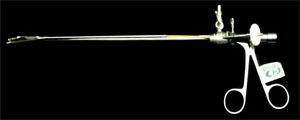By Robert Andrews, VP Business Development
 Prototyping is a valuable tool in the market research and product development processes. An effective prototype can rapidly convey design concepts to an end user, company management, or a potential investor.
Prototyping is a valuable tool in the market research and product development processes. An effective prototype can rapidly convey design concepts to an end user, company management, or a potential investor.
Prototyping enables marketing to see the reactions of others in order to validate (or invalidate) the product idea or concept. It is a valuable tool to determine the usability of the device by observing customer interaction with it. The prototype can prove engineering feasibility of a design concept (or reveal technical hurdles).
Types of Prototypes
Presentation prototypes, are generally a “looks-like” prototype which is non-functional. This prototype can be used to get buy-in from Marketing to convey a concept to the user and obtain feedback.
Feasibility, or engineering “works like” prototypes, can be used to prove new design concepts and specific device functions. These prototypes, which can be in the form of breadboards (individual modules), often do not look like the product or are the size of the final product. This type of prototype can inform product development of the design direction to take and lends itself to fast iterations to make rapid progress.
Functional, or “works-like/looks like” prototypes, are generally in a self-contained package and provide the engineering group with a device to test design requirements. These prototypes are used in the iterative design cycle where the unit is tested and design revisions are made to achieve the design specification.
Production prototypes, or “works-like/looks-like/made like” prototypes, represent the device that will go to market. Components can be assembled with prototype tooling and low volume assembly methods can be utilized. The design is the final iteration that is going to production. Quantities are built that are sufficient for design verification, where the requirements can be tested to ensure compliance to the specifications.
Prototyping Methods
After determining the purpose and requirement for the prototype, the fabrication method(s) can be determined. Criteria for fabrication method can include piece part and tooling cost/lead time, finish, dimensional accuracy, and strength of the materials. Approaches include:
Conventional Machining
Machining is a well-established prototyping method. It allows the use of a variety of materials including many metals and plastics. It has the advantages of high accuracies and low tooling costs, but the cost of the part can be high due to labor content.
Casting
A model of the part is first constructed in order to cast a part using a liquid (usually a casting resin). The model is typically constructed by machining or 3D prototyping. A mold is formed in two halves over the model using flexible silicone or composite material. The casting material is then poured in to the mold and hardened.
This process has the disadvantage of producing only solid parts, and the mold life is limited. The process is moderate in accuracies, tooling, and piece costs.
Molding
Molding a part requires that a cavity to form the part be machined and incorporated into a mold frame. Methods include rotational, injection, compression, and blow molding. Molding prototypes have longer lead times than machining, and higher tooling costs.
The advantages include low piece price, high strength, good surface finish, consistent dimensions, and near production quality parts.
Thermoforming
Thermoforming utilizes a plastic sheet that is heated and formed on a two-dimensional mold using vacuum to draw the plastic into the mold where it cools and retains its final shape.
The process has the advantage of being able to form parts with different wall thickness by varying the sheet stock. The lead times and tooling costs are generally lower than molding.
Disadvantages include low dimensional accuracies, limitations on part geometries and surface finishes, and frequent requirements for post finishing operations.
3D Prototyping
3D prototyping also known as additive (or “digital”) manufacturing has become a preferred method of prototyping. The design is modeled in CAD and a 3D data file is produced. The file is used to produce a prototype using a variety of material deposition methods including stereolithography, selective laser melting, select laser sintering, laminated object manufacturing, fused deposition modeling, and digital light processing.
Additive manufacturing has a key advantage of short lead times. Components can typically be fabricated in a day or less. Adequate surface finish can often be achieved without post finishing depending on the method and material selected. The piece price can be high, but is usually acceptable for low quantity fabrication. Some processes can produce very high dimensional accuracies, and some can be extremely strong. More and more materials can be 3D printed, including a wide range of polymers (with and without additives that increase strength), elastomers, and a variety of metals.
Effective prototyping
Prototyping is a proven method of communication of the product concept and design to a wide range of stakeholders. Successful prototyping requires:
- Clear understanding of the purposes of the prototypes
- Identification of the audience intended to view and use the prototypes
- Robust definition of functional and/or appearance requirements of the prototypes
- Selection of the most suitable fabrication method for each component